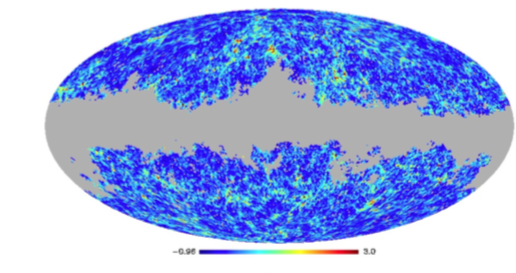Abstract
Though debated, the existence of claimed large-scale anomalies in the CMB is not totally dismissed. In parallel to the debate over their statistical significance, recent work focussed on masks and secondary anisotropies as potential sources of these anomalies. In this work we investigate simultaneously the impact of the method used to account for masked regions and the impact of the ISW effect, which is the large-scale secondary anisotropy most likely to affect the CMB anomalies. In this sense, our work is an update of both Francis & Peacock 2010 and Kim et al. 2012. Our aim is to identify trends in CMB data with different mask treatments. We reconstruct the ISW signal due to 2MASS and NVSS galaxies. We account for missing data using the sparse inpainting technique of Abrial et al. 2008 and sparse inpainting of the CMB, LSS and ISW and find that it constitutes a bias-free reconstruction method suitable to study large-scale statistical isotropy and the ISW effect. We focus on three large-scale CMB anomalies: the low quadrupole, the quad/oct alignment, and the octopole planarity. After sparse inpainting, the low quadrupole becomes more anomalous, whilst the quad/oct alignment becomes less anomalous. The significance of the low quadrupole is unchanged after subtraction of the ISW effect, while the trend is that the quad/oct alignment has reduced significance, yet other hypotheses remain possible as well (e.g. exotic physics). Our results also suggest that both of these anomalies may be due to the quadrupole alone. The octopole planarity significance is also reduced after inpainting and after ISW subtraction, however, we do not find that it was very anomalous to start with.

